How to choose a reversible plow for a walk-behind tractor?
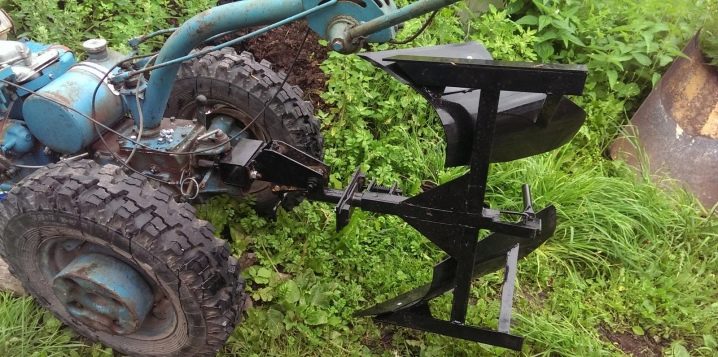
High-quality plows are used to cultivate arable land. Today there are several varieties of this tool. The reversible plow is most often used by farmers due to the maximum and simple efficiency of this equipment. We will tell you more about classifications, ratings and methods of using reversible plows for a walk-behind tractor in this article.
Specifications
The reversible plow for the walk-behind tractor has two mirror working elements - plowshares. One of the blades plows the cultivated area, the other is in the air. After turning the walk-behind tractor, the plowshares change places due to the influence of the hydraulic system. This structure of the plow allows you to get land without furrows, ridges.
The use of a standard single plow does not allow achieving such indicators. Due to the design of the instrument, the final result is with double furrows positioned on the sides of the center. Revolving models are fixed to the equipment in three sections, ensuring uniform rigidity of the structure. Positive qualities include:
- ease of adjustment of structural units;
- increased wear resistance of working bodies;
- coverage of arable land;
- ease of transportation of the tool.
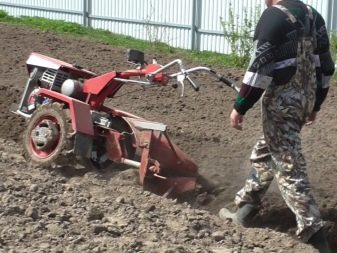
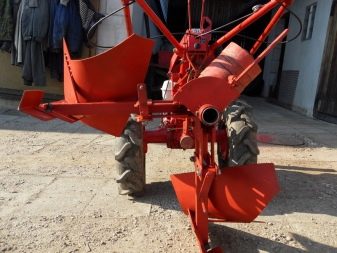
The mounted plow device includes the following parts:
- rigid frame;
- toothed sector, gear, hydraulic cylinder responsible for the ability to turn the tool;
- disc body with plow blades;
- fuse;
- hydraulic device;
- wheels.

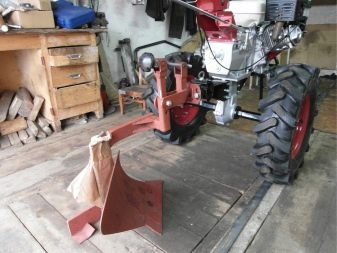
Setting the working width is possible in 4 directions from 33 to 50 cm. If the plow consists of multiple bodies, then the width increases up to 9 meters. The dimensions of plows for walk-behind tractors are not massive. The width of the plowshares of reversible plows averages 50 cm with a height of 25 cm. The blade tip angle is about 20-40 degrees. The entire height of the finished structure is no more than a meter.
What are they?
Working elements of a single-body plow in form are divided into:
- ploughshare (subdivided into screw, cylindrical and semi-cylindrical);
- moldboardless;
- disk;
- rotary;
- combined or universal, designed for the greatest crushing of the cultivated land.
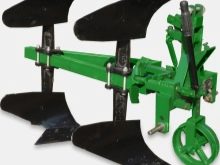
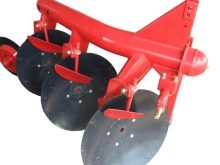
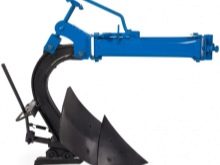
By the number of working parts, devices are:
- single-hull (the easiest to use, have the lowest weight, simple design);
- double-hull;
- multi-hull (used in extremely difficult tasks for plowing the soil).
Reversible models are used when processing difficult to feed and heavy soils. The design is a feather bent upward, which turns it over during tillage. Reversible plows are available in both reversible and rotary forms. Rotary ones are represented by two-body and three-body types. These models have a complex design, the number of shares depends on the shape of the plow.
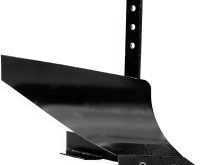
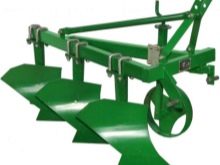
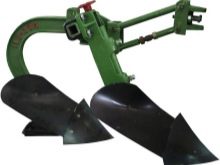
Disc are used for plowing wet soils. The working depth is the smallest when compared with other types. The two-share plow is the standard model with two opposite blades. Each working body rolls off the soil to the right and left sides, depending on the selected direction, the plowshares are reset by manual rotation of the mechanism by 180 degrees. These plows are the most popular and the most productive.Suitable for plowing on inclined surfaces, slopes.
A two-turn plow is used for plowing neglected and stagnant layers of soil. This model, unlike others, does not have idle runs on the soil, which improves the productivity of the tool several times. The design of the two-turn plow allows changing the direction of movement of the shares by 90 degrees.

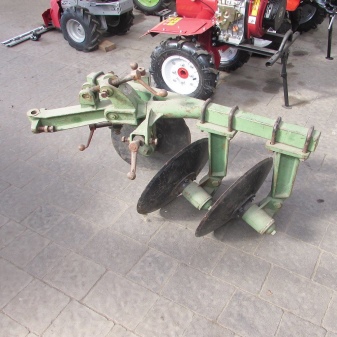
Model rating
The most common models are Kverneland, Almaz, Lemken, Salut, Mole, Neva. The Lemken plow (Germany) is distinguished by its high productivity, the speed of turning the working surface in narrow areas, the strength and durability of the material from which it is made. Such models are equipped on modern tractors with increased power. Some Lemken variants are formed by a 4-profile frame, are equipped with a coulter speed control system and are equipped with hydraulic protection against inadmissible loads. Hybrid models are used as mounted and semi-mounted reversible plows.
The "Neva" model is presented as a hinged and one-body version. The mounted model is made with a single blade design, plowing is performed in one direction. The depth of tillage is changed manually, the range is from 18 to 22 cm. The single-body plow has 9 different models, differing in weight, dimensions and arable land capabilities. The weight range varies from 3 to 15 kg. The plowing depth is from 14 to 20 cm. Single-hull types are universal and will suit any requirement.
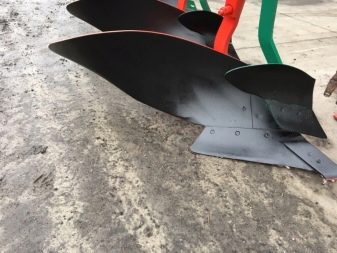
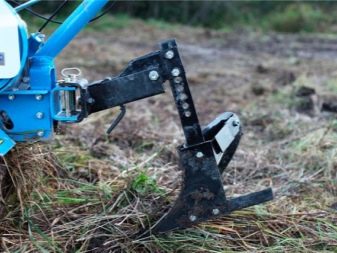
The Salute model is presented in many types. These are reversible, disc, mounted plows. The plow of the "Mole" series is represented by single-body and double-turn models. All instruments are made in Russia. All types of plows are suitable for walk-behind tractors with the same name. This is for ease of use and for finding suitable replacement parts.
Plows of the "Kverneland" brand are manufactured in Russia and are designed for coupling with tractors. The lineup is divided into mounted reversible and semi-mounted plows. Semi-mounted ones have the largest number of working bodies, up to 14 pcs., Are easy to operate and configure the equipment. The reversible ones are characterized by high quality, durability, and are divided into models suitable for various types of soils, including stony ones. They have from 3 to 7 buildings.
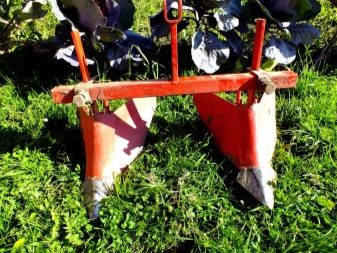
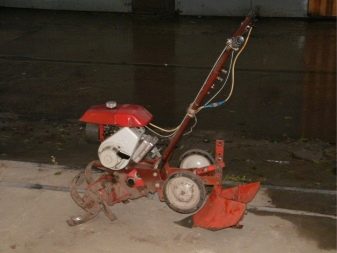
Setting and adjusting
Whatever design features the plow has, they are all fixed to the walk-behind tractor using a coupler of two models - universal and stationary. The first hitch model is the optimal choice due to the wide range of tool settings. When mounting the plow to the walk-behind tractor, the type of hitch does not affect the fastening technique. You can fix the equipment as follows.
- The plow is located on a raised surface in relation to the walk-behind tractor. Natural elevations, hummocks, and a mound of bricks are used as a pedestal.
- Hitching is done in the area of the towbar. All holes must be aligned with each other to form a single ring.
- Coupling is done with a bolt.
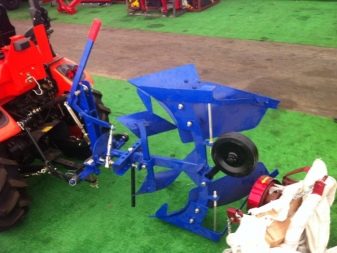

When securing the attached equipment, the bolt should not be clamped with increased force. The rigid fixation of the elements affects the quality of the cultivation of arable land, the plow will swing from side to side. To prevent this from happening, a horizontal gap of 50 degrees must remain at the attachment point. Next, the canopy is adjusted:
- plowing depth is selected;
- the level of inclination of the board;
- blade angle.
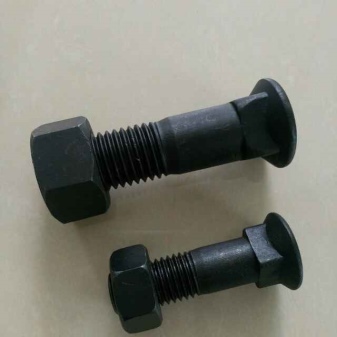
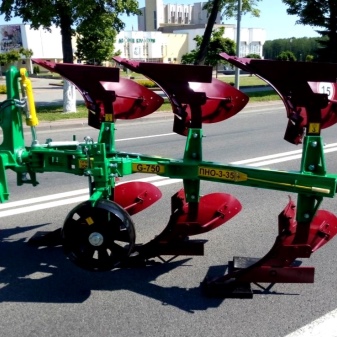
The depth corresponds to how much the working parts of the plow will be immersed. Most often, the value is equal to the height of the blade. Shallow plowing does not remove weeds from the ground. With an excessive processing depth, the fertile layer, when mixed with the lower layers, will lose nutrients necessary for the development of the sown culture.To set the depth level, three bolts must be locked in the correct lock position while raising and lowering the plow. The screw handle is responsible for the tilt, the adjustment is made according to the following scheme:
- the walk-behind tractor is located on a hill;
- the handles are turned until the board comes into contact with the ground;
- the handle is unscrewed in the opposite direction, the board should be located at a height of several centimeters from the ground level (2-3 cm).
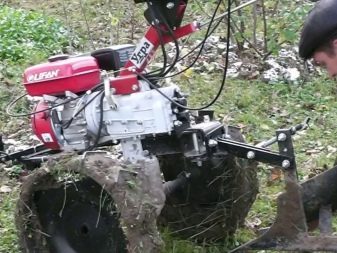
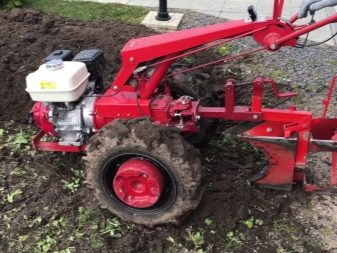
If the angle is too high, the tool will slip due to the plow catching on the ground. If the level is insufficient, the machine will not be able to process all layers of soil with the set depth. Blade angle adjustment is performed according to the listed rules.
- The tiller is located at the edge of the cultivated area and the first furrow is made. Then the obtained arable land depth is determined.
- The passage must be in a straight line.
- Further, the wheel of the walk-behind tractor is put into the furrow, the plow is located perpendicular to the ground. You can use a square.
All these methods will lead to high-quality plow tuning, provide protection against possible tool breakage.
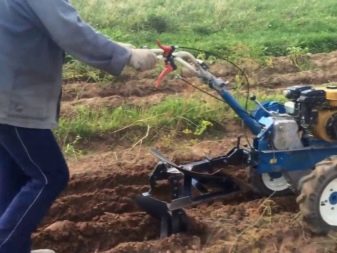

Operating rules
Well-plowed land affects the yield of sown seeds. At agricultural enterprises and in private estates, the use of reversible plows on walk-behind tractors and tractors leads to positive indicators of soil cultivation. The difference in arable elements depends on the type of implement used. Their weight, size, number of dumps vary. When working, it is necessary to make sure that the hitch is correctly adjusted and locked.
- It is forbidden to stand up with your face and sides of the equipment used, to stick your hands in when the parts of the mechanism are working.
- Do not use conventional plows when plowing stony lands. This will lead to rapid damage to the tool and possible mechanical injury.
- All replacements of working parts and parts are made only when the equipment is turned off.
- The plowing speed should not exceed 10 km / h on tractors and not more than 6 km / h on walk-behind tractors.
- It is necessary to repair and lubricate working parts in a timely manner.
- There are no traces of metal corrosion and cracks on the fastener.
- It is forbidden to use massive, unsuitable plows with walk-behind tractors. An incorrectly selected technique will lead to the impossibility of plowing the area, breakdown of the walk-behind tractor and the tool.


Selection Tips
There are a few things to consider before buying.
- The type of motoblock used.
- The quality of the processed surface - soil types, moisture, the presence of slopes.
- The ability to adjust the shares.
- Design features of the plow.
- The presence of an additional plow when working the land with huge attachments. The problem is that after plowing with large machines, the remaining furrows (headlands) need to be plowed again.
- Protective qualities of the tool. The choice of the case is carried out taking into account the work and the type of soil. For stony lands, it is advisable to purchase a plow with springs and hydraulic protection.
- Availability of an automated tool setting process.
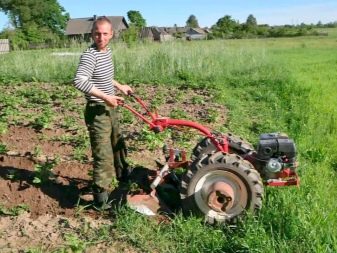
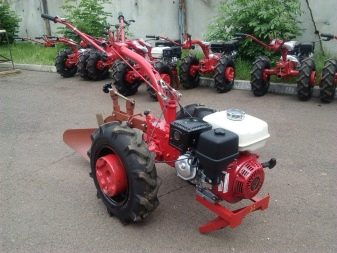
For an overview of the work of a walk-behind tractor with a reversible plow, see the following video.



































































The comment was sent successfully.